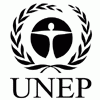Resource information
Policymakers and land managers around the world are struggling to use our finite land and resource base to increase agricultural production, ensure resilient ecosystems and improve livelihoods. Many are turning to integrated landscape management (ILM) as a framework for inter-sectoral planning and investments to reduce potential trade-offs and realize inherent synergies.
ILM approaches are being applied to reduce deforestation in agricultural landscapes, increase agricultural production and water supplies by restoring degraded watersheds, and to establish biological corridors through densely populated rural regions.
Many national and international agencies have begun investing in and adopting ILM approaches, as have a growing group of pioneering private investment funds. This is encouraging, as the strained state of many public sector budgets after successive financial crises has heightened the need for a blend of both public and private finance to achieve objectives of sustainable agriculture, ecosystems and livelihoods at scale.
But while the potential rewards are increasingly clear, it is no easy task to balance the conflicting financial, environmental and social return profiles required by the different investors who are critical for landscape management. When the Landscapes for People, Food and Nature Initiative began in late 2011, it was apparent that successful ILM required access to the right kind of finance; and also that there was considerable innovation emerging in both public and private finance to address the new opportunities of ILM. However this emerging experience had not yet been assessed.
“Financing Strategies for Integrated Landscape Investment,” developed collaboratively by the expert members of the finance working group of the LPFN, is a timely input to the vibrant dialogues about investment strategies to achieve an inclusive green economy that is resilient to climate change.
This study uncovered a wealth of models for financing ILM, and for promoting integrated investments in agriculture, ecosystems and rural development.
The report provides a foundation for building robust investment platforms, including more effective private-public partnerships. The cases from innovative finance institutions, as well as the case studies of landscapes from Brazil, Kenya and South Africa, demonstrate promising ways to add value and attract investment that benefits people, food and nature.



